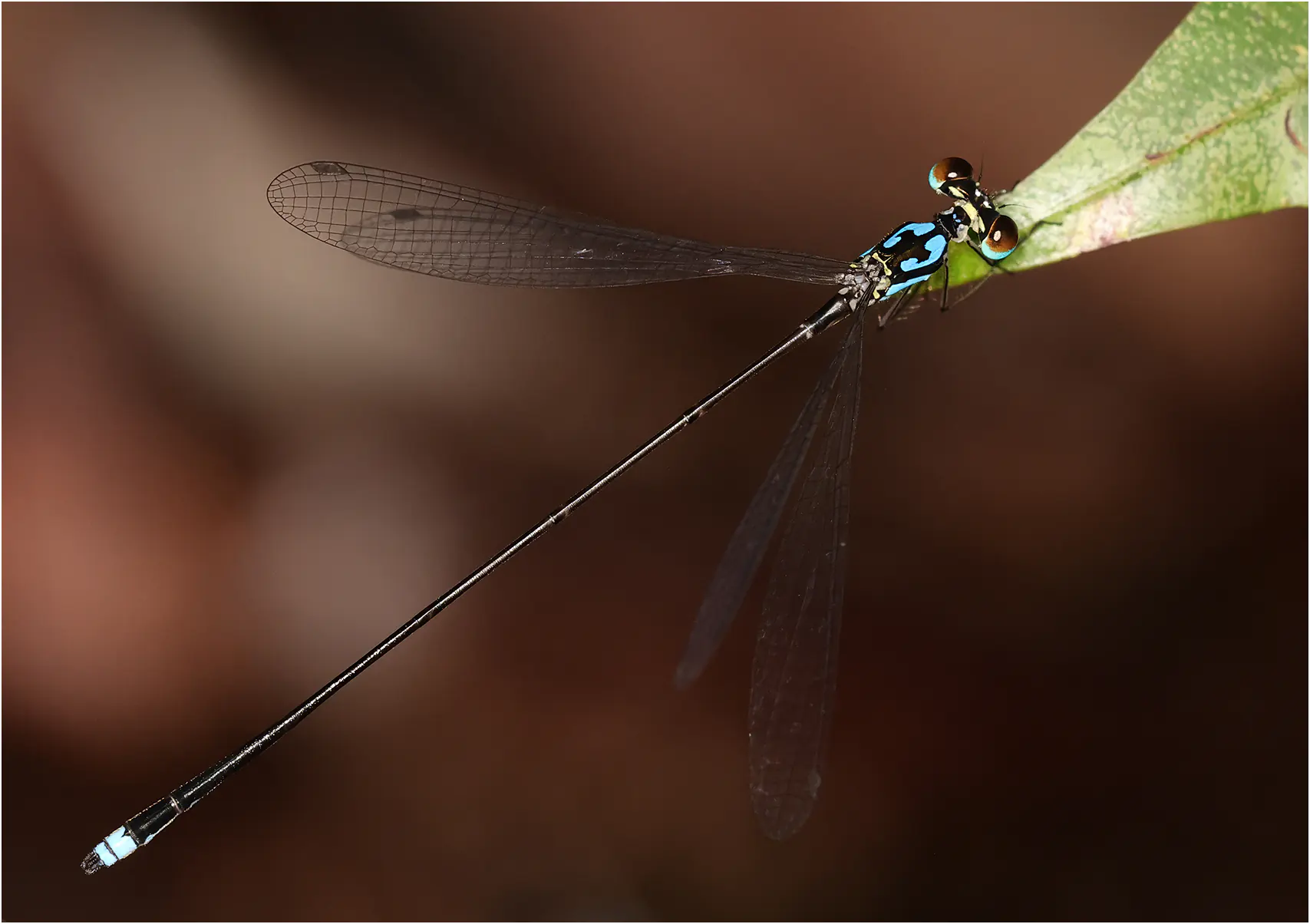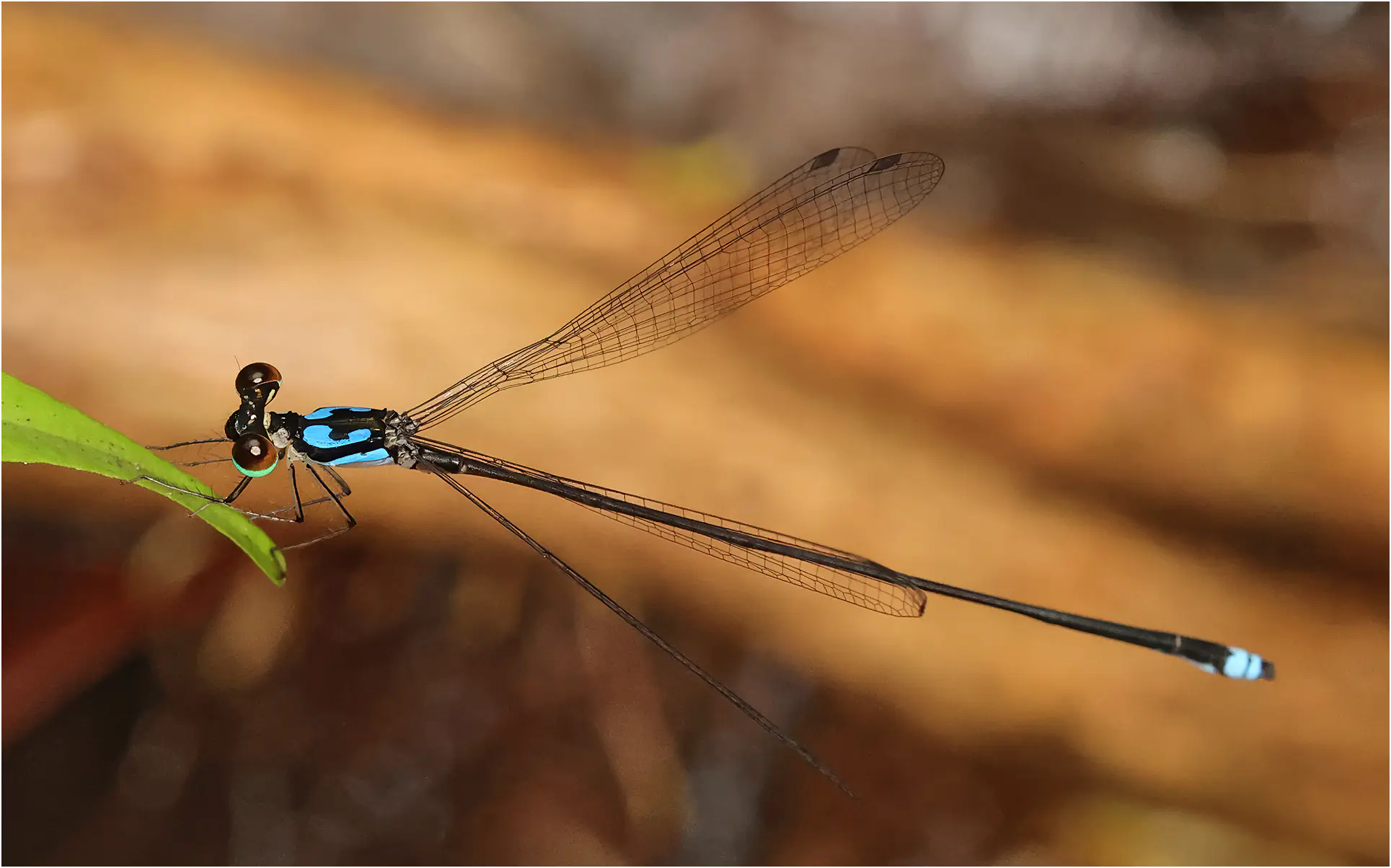
Coeliccia nigrohamata male is part of a genus of Platycnemididae that currently includes 80 members in Asia, including 15 in Borneo, all endemic. Nine species were described in Asia in 2020, and others will certainly be added to the list.
It immediately made me think of C. octogesima, which I encountered in 2013 in Peninsular Malaysia, for the thoracic motif representing an old telephone handset. What I didn’t know is that there are at least two other species in Borneo that exhibit the same decoration: C. matok, which we will encounter in a peat bog, and C. paludensis, which we have not seen. Both often have a little blue on the 8th segment, a coloration absent in Coeliccia nigrohamata.
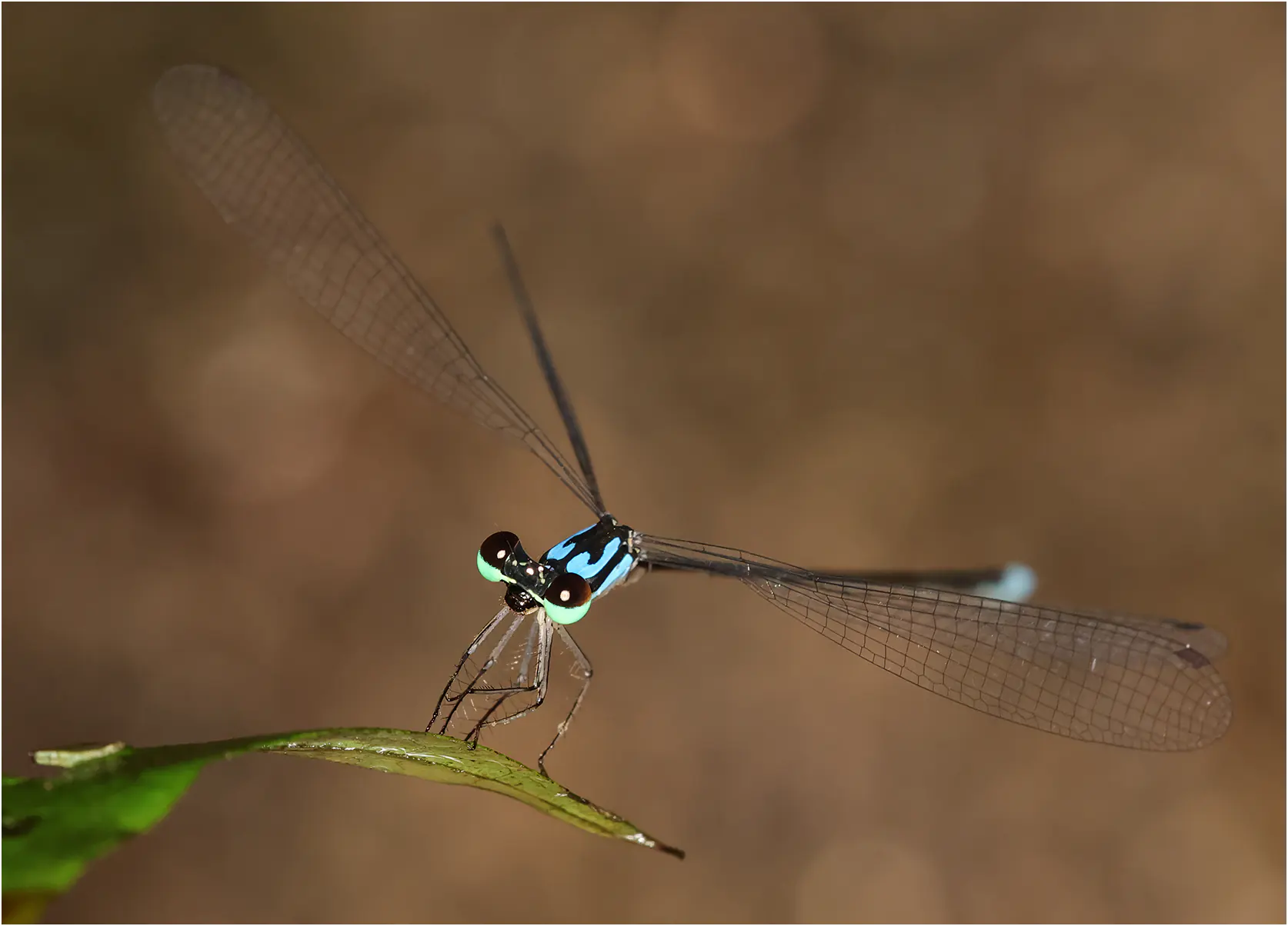
To identify them, we must therefore refer to the anal appendages and/or their habitat, which we discover in Dow, 2016 (2). The upper anal appendages of C. nigrohamata are shorter than the lower ones, it is the opposite for C. matok. But, the difference is tiny and the photos I took are unable to show it; the thoracic pattern seemed so specific to me when I met C. nigrohamata that I thought it was not worth photographing the anal appendages very precisely…
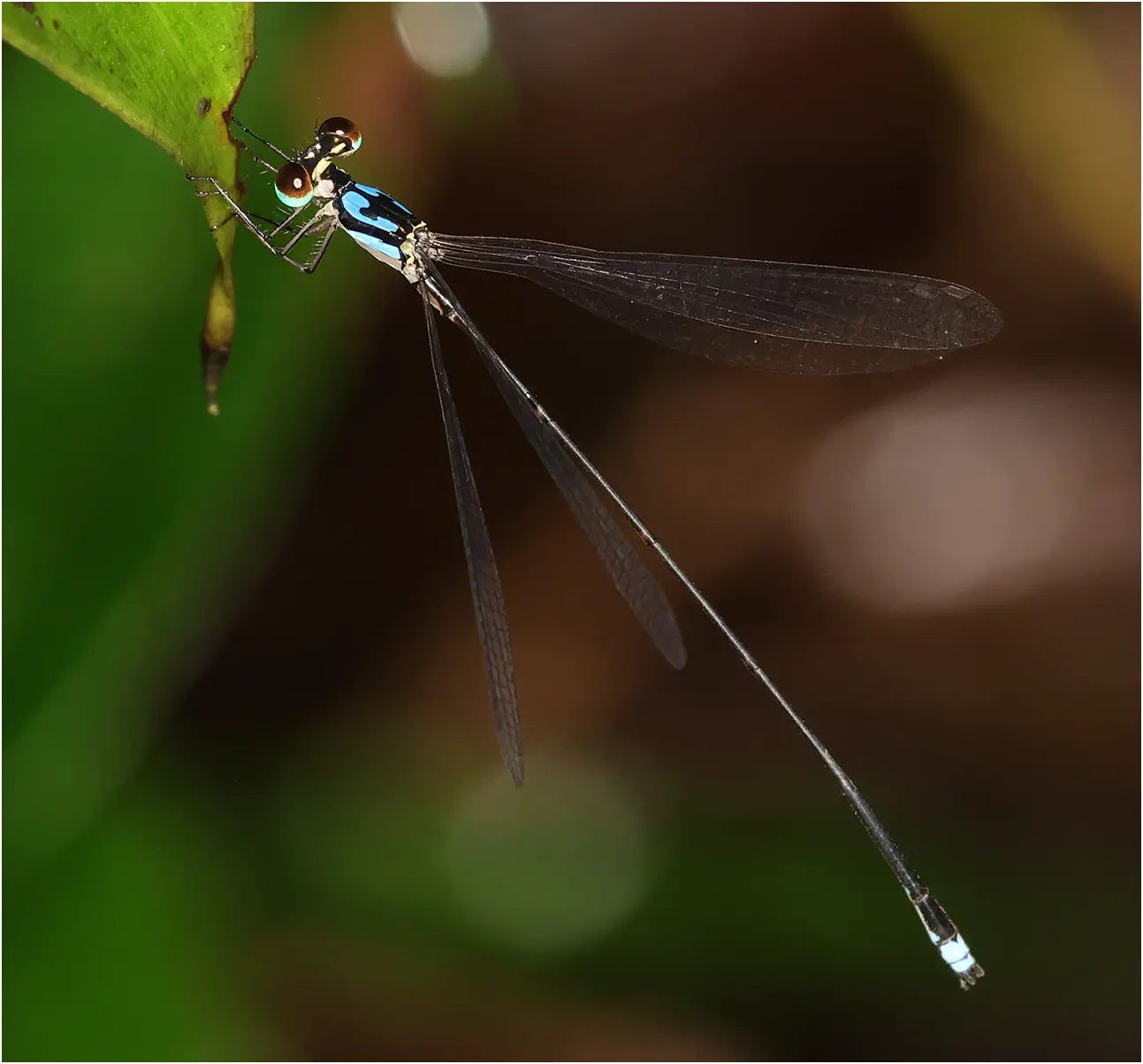
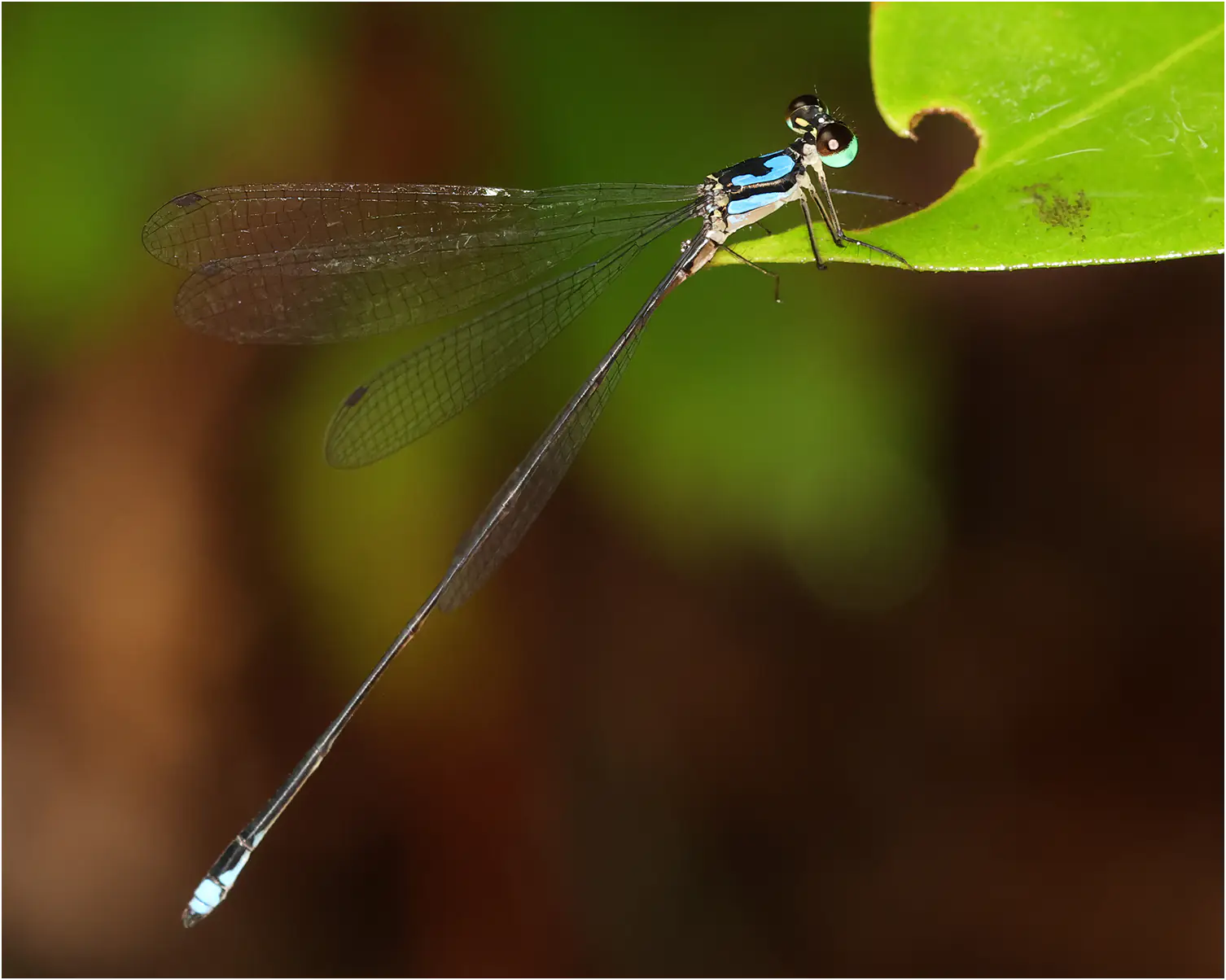
C. paludensis is known only from southwest Borneo. And, fortunately, in principle, C. nigrohamata and C. matok do not coexist; when they occur in the same geographical area, C. matok is confined to forest peatlands. The habitat of C. nigrohamata is more varied, a little more open. We have encountered it near waterfalls, at the edge of forests, and especially in ditches, in overgrown, tunnel-like areas, as below.
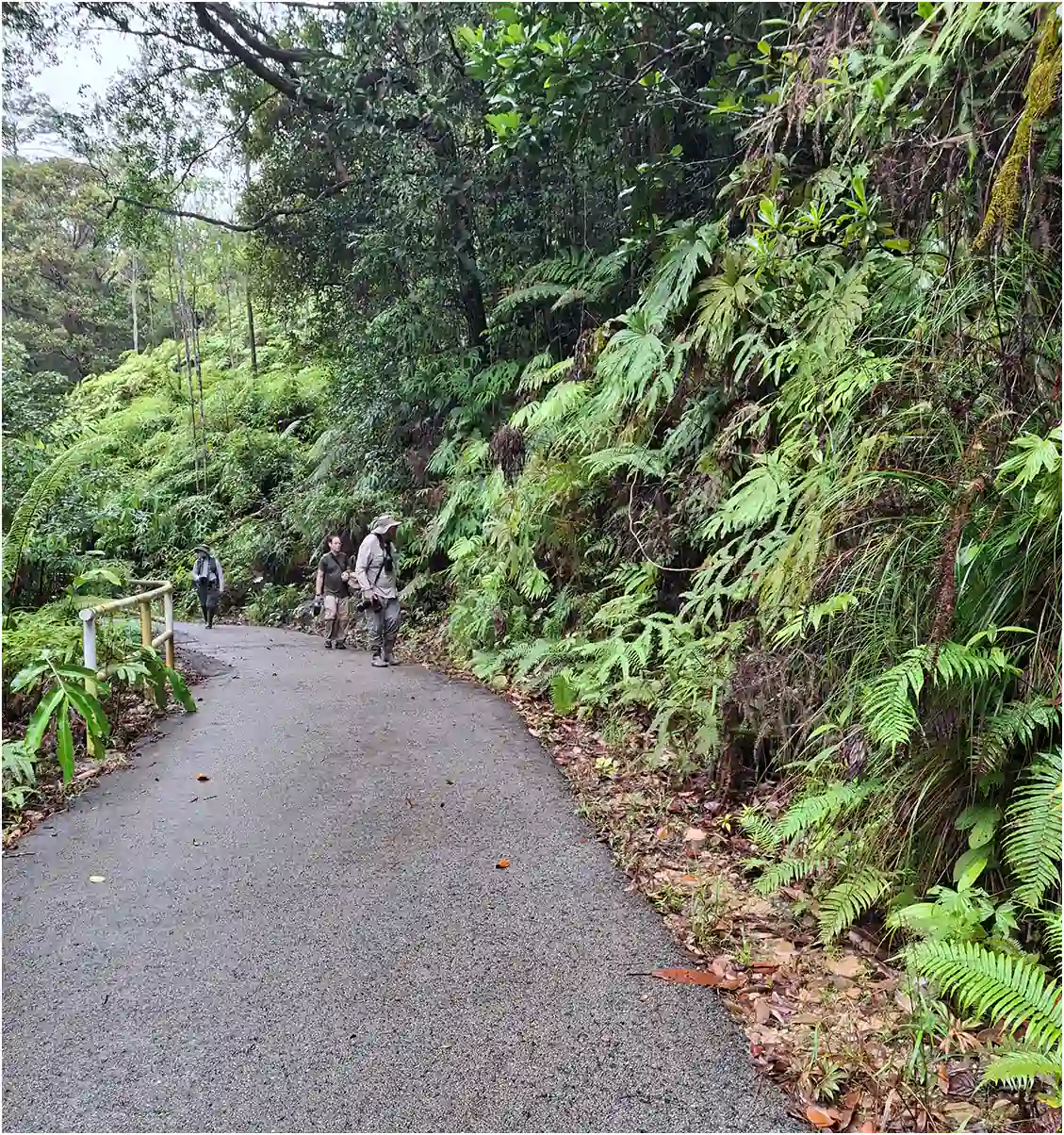
On the right side of the road, you have to imagine a ditch, covered with vegetation, where the water flows more or less gently, depending on the slope of the land. In places where the vegetation is a little less dense and forms tunnels, you can find Coeliccia nigrohamata, but also C. cf. nemoricola, and sometimes, when the ferns spread out a little further, Stenagrion dubium and Devadatta clavicauda.
It is a hill road rather than a mountain road, and here we are at an altitude of 260 m, on the slopes of Mount Serapi, which reaches almost 900 m.
Laidlaw tells us that its abdomen measures 38 mm, which gives it a total length of just under 45 mm.
It frequents, in the forest, streams and swampy areas.
It is endemic to Borneo, but widely distributed in the northwest, through Sarawak, Brunei and Sabbah. Furthermore, it is also found in southeast Kalimantan (Indonesia). IUCN Red List . Rory Dow believes that populations are declining (destruction of the rainforest), although the situation is not yet worrying about this species.
The weather we encountered during these 13 days of survey, especially when we were in the forest, was very disappointing and wet; we encountered four species of Coeliccia, but no females!

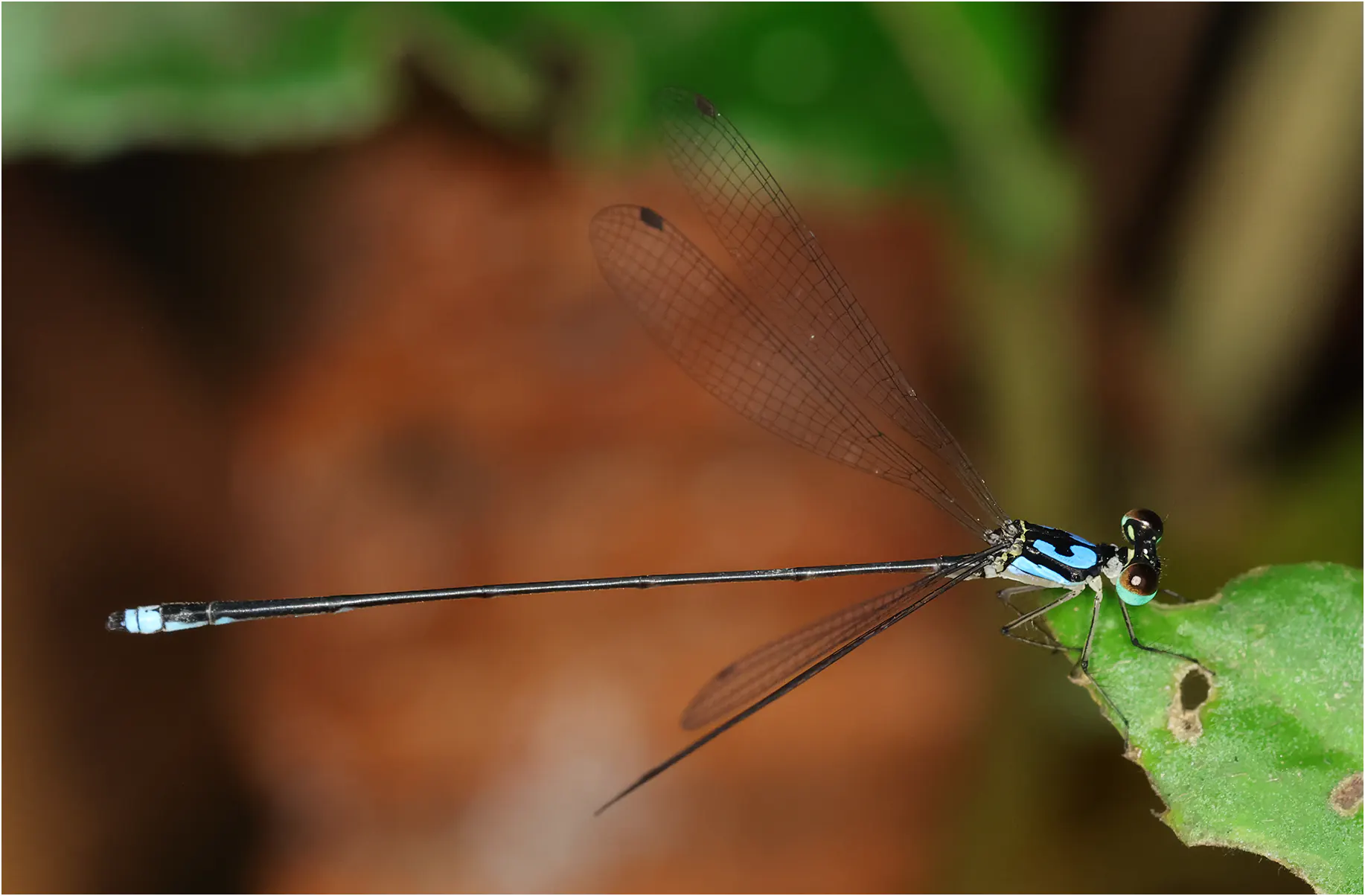
Etymology
Selys described the first species of the genus in 1863 under the genus name of Trichocnemis (longhorn beetle) and it was Kirby who rectified and created the genus Coeliccia in 1890. This genus name, unexplained by the author to my knowledge, perhaps comes from the Latin coelum (or caelum ), which means sky or celestial, and a suffix or simple ending chosen for aesthetics or phonetics. Indeed, the first species described by Selys, Trichocnemis membranipes, is sky-blue, for all its non-black parts. Nigrohamata : from the Latin niger , black and hamatus which means hooked, provided with a hook. Laidlaw does not give an explanation. It should also be noted, and I am very surprised, that Laidlaw does not describe this singular form of blue coloration on the thorax, but he sees two unconnected blue spots on each side of the dorsal carina: » on either side of the middorsal carina are two silver-blue spots, the lower large and elliptical, the upper small and linear. » . We should therefore probably not look for the meaning of nigrohamata on this side (as I first thought because of the black shape contained in this blue drawing), but rather in the shape of the upper anal appendages, which he describes as black and equipped with an internal tooth: « Anal appendages black ; the upper pair shorter than the lower, pair, obliquely truncate, with two internal ventral teeth on each . » The two internal teeth could be these hooks.
